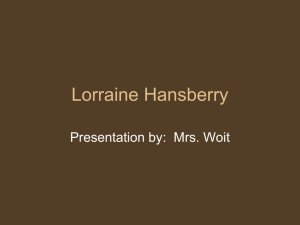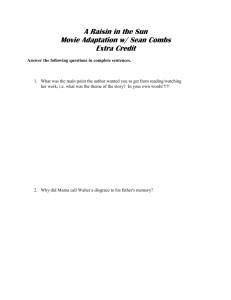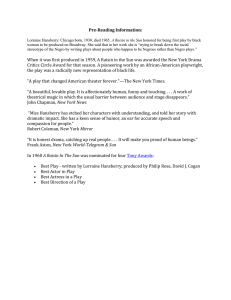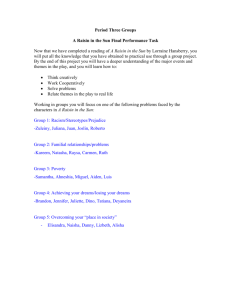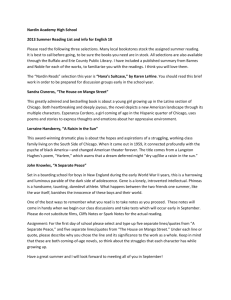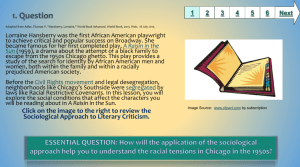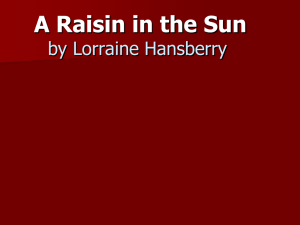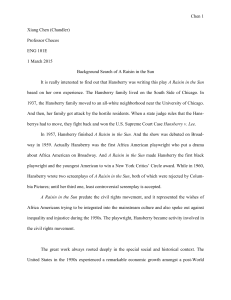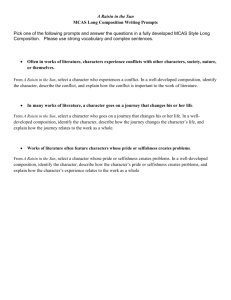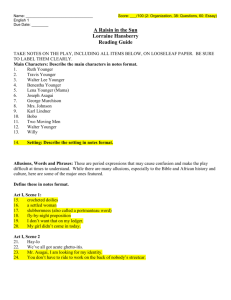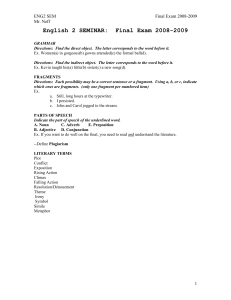A Raisin in the Sun - hhs
advertisement
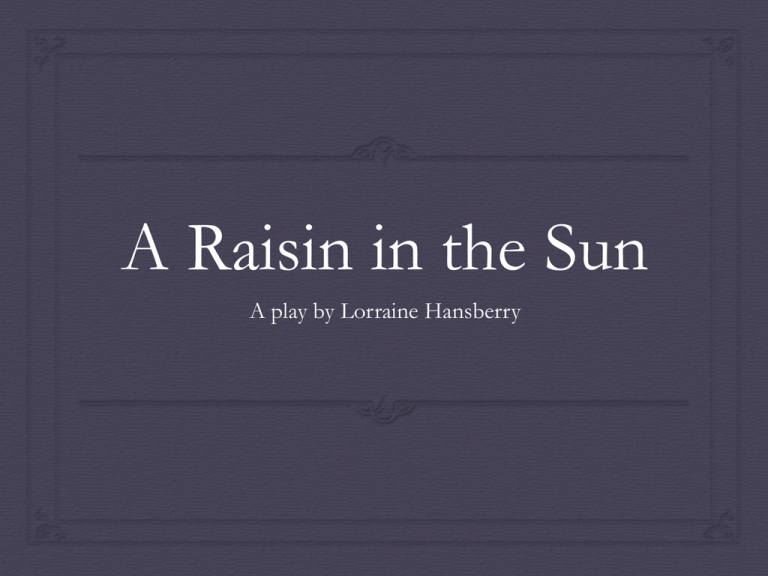
A Raisin in the Sun A play by Lorraine Hansberry About the Author Lorraine Hansberry Born: May 19, 1930 in Chicago, Illinois First black, female playwright Heavily involved in civil rights Granddaughter of a freed slave About the Author Lorraine Hansberry Not a typical upbringing Parents were well educated and successful citizens Outspoken civil rights advocates Dropped out of the University of Wisconsin after 2 years Moved to NYC to become a writer Became associate editor of Freedom, a progressive black magazine Worked with W.E.B. DuBois Met Langston Hughes—an inspirational poet About the Author Lorraine Hansberry 1953: Married song writer Robert Nemiroff; divorced in 1964 1959: “A Raisin in the Sun” opened on Broadway 1964: “The Sign in Sidney Brustein’s Window”—the only completed work produced in her lifetime 1965: Died on January 12 in New York City of pancreatic cancer Inspiration for “A Raisin in the Sun” 1926-1948: Restrictive covenants (or legal contracts) were used nationwide to ban people of color from purchasing homes in white communities. 1938: Lorraine Hansberry’s family moved to an all white neighborhood in Chicago. Led to a civil rights case Inspiration for “A Raisin in the Sun” 1940: 80% of property in Chicago carried restrictive covenants; forbidding black families to live in certain Chicago communities. 1940: U.S. Supreme Court case Hansberry v. Lee Restrictive covenants were ruled illegal in their neighborhood 1968: Racially restrictive covenants became illegal through the Fair Housing Act. Residential patterns created by racially restrictive covenants still exist today. Inspiration for “A Raisin in the Sun” HARLEM by Langston Hughes What happens to a dream deferred? Does it dry up like a raisin in the sun? Or fester like a sore— And then run? Does it stink like rotten meat? Or crust and sugar over— Like a syrupy sweet? Maybe it just sags like a heavy load. Or does it explode? What happens when dreams are ignored, or postponed? Hughes was addressing the situation of blacks in America, who had been denied the American dreams of education, career and purchasing power A Raisin in the Sun Type of work: Play Setting (Time): Between 1945-1959 Setting (Place): South Side Chicago Tone: Realistic Conflict: A working class family struggles against economic hardship and racial prejudice. A Raisin in the Sun Themes The importance of dreams The importance of family The need to fight racial discrimination Issues Addressed Poverty Race relations Gender relations This was the first play to portray black characters, themes, and conflicts in a natural and realistic manner. A Raisin in the Sun Black vernacular is used throughout the play. The dialect of English often spoken by African Americans in urban and southern regions of the United States. Characterized by: Diction (word choice) Pronunciation (how a word is said) Use of the word “be” Tendency to delete the –s ending of verbs Use of the word “done” to stress the completion of an act A Raisin in the Sun Questions we will explore… How do dreams motivate people? Is it dangerous to place too much emphasis on materialistic things? How important is family happiness? A Raisin in the Sun on Broadway 1959 2014 A Raisin in the Sun on Film 1961 2008
